Carl Jung’s 11 Best Books
12 minutes

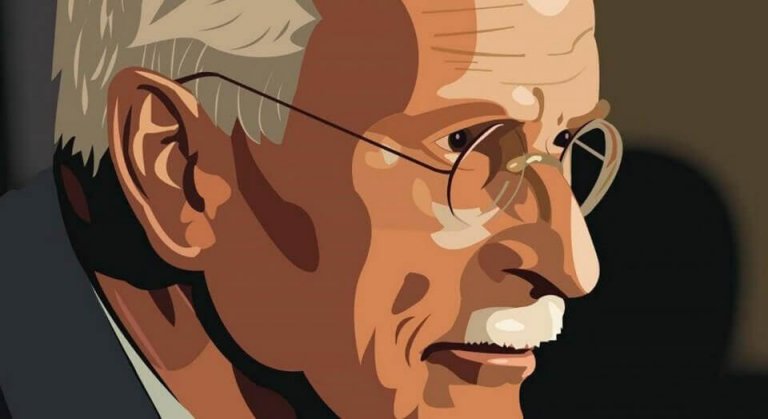
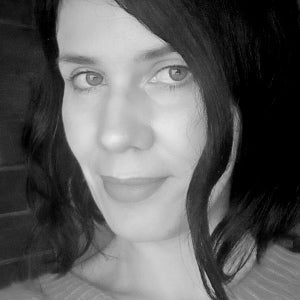

Written and verified by the psychologist Valeria Sabater. Last update: 15 November, 2021
Reading: Carl Jung’s 11 Best Books
Carl Jung’s books go beyond a simple analysis of human behavior. He was a pioneer of deeply psychology and a fecund writer. His exercise contains a fantastic alchemy of psychoanalysis, spirituality, religion, doctrine, and the dream worldly concern. few personalities stir up interest like this capital analyst of the human soul. Graham Collier said that Jung only needed a little over five minutes to impress anyone. Collier was an RAF pilot in World War II and philosophy professor at the University of Georgia. He had the opportunity to meet the celebrate swiss analyst when Jung was 75 years old. Collier was impressed by Jung ’ s dry and about rascally look and his respectful muteness when listening to person ’ randomness answer .
Life international relations and security network ’ t an illness that you can die from ”
-Carl Gustav Jung-
Doctor Collier besides explained that during one period in his animation, Jung felt rejected by some of the scientific community. It was after publishing more than one reserve about the study of the conscience that delved more deeply into apparitional concepts than analytic ones. In malice of all that, his theories raised so much interest that the BBC, in an effort to appeal to the desires of the public at the time, invited Jung to debate with a Labor Party member on exist television in a show called Face to Face. This particular politician was quite critical of Jung ’ second theories. The result of the meet was just amazing. Jung ’ randomness composure, spontaneity, conviction, and capture were such that the “ interview ” ended up being more of an improvise conference. The politician, John Freeman, who went on the program with the intention to give a criticism of Jung ’ sulfur theories, was therefore captivated by him that they developed a durable friendship. In fact, Freeman was the one who encouraged Jung to write one of his best-known books, Man and His Symbols. There are many more anecdotes to tell about Jung. We could talk about his extensive travels, his complex relationship with Freud, or his determine on film and on our acculturation in cosmopolitan. however, one manner to understand Jung is through his books. It is worth diving into this incredible bequest and exploring his theories, symbols, personal reflections, and this figure who made an indelible set on the history of psychology .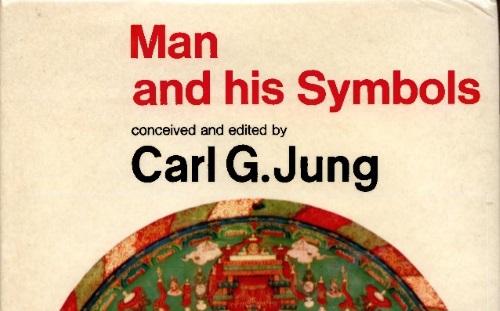
The best books by Carl Jung
Jung’s work is extensive and draws a batch of material from his own autobiography, including books of essays and personal reflections. We can even find the 1906-1913 commensurateness between Jung and Freud. These letters delve deeper into the exploitation of the psychoanalytical movement and the relationship between these two figures. now, in this article about the Carl Jung’s best books, our priority is to cite his most representative work. We are looking for the books will delight everyone, from novice to expert “ Jungians ”, with their concepts, theories, and ideas .
1. Man and His Symbols
At the begin of this article, we explained the origin of this book. After his BBC consultation, a long-familiar politician asked Jung to share his theoretical concepts with the general public in the simple and most educational washington possible. He did just that, and this ended up being Carl Jung’s last book which he wrote before his death in 1961. In Man and His Symbols, what grabs our attention first base are the book ’ s 500-plus illustrations. These images in full immerse us in the theory of symbolism and the importance of symbols in our dreams, in art, and even in our day by day behavior .
“ I am not what happened to me. I am who I choose to become ”
-Carl Gustav Jung-
2. The Archetypes and The Collective Unconscious
Essential. This is one of Jung’s most interesting books and the one that defines one of his most controversial topics: archetypes. In front of us is a collection of essays that digs into the corporate unconscious on one hand and the nature of the original on the other. This psychic expression of structures inherited from our colleague beings is, without a doubt, what makes up the basis of much of jungian work .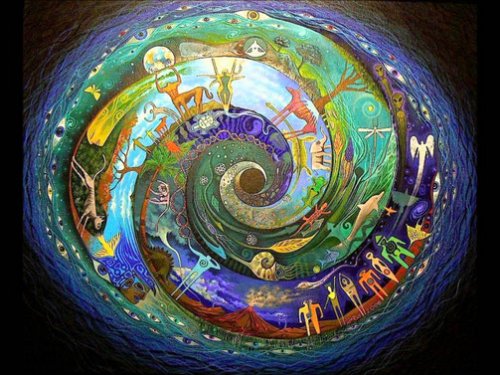
3. The Relations Between the Ego and the Unconscious
As we already know, Carl Jung was the founder of the school of analytic psychology. This koran is, without a doubt, the best theatrical performance of this set about. It is besides, in kernel, a reflection of a belittled part of the history of psychology. En these pages, Jung guides us through a much more original idea than Freud had offered us at that time regarding the human psyche. His continuous studies and revisions of the subject give us a full understanding of the unconscious mind. here, Jung establishes the dichotomy between the corporate unconscious and its influence on the individual unconscious .
4. Synchronicity: An Acausal Connecting Principal
synchronism : An Acausal Connecting Principal is a little jewel that Carl Gustav Jung wrote with Wolfgang Pauli, a Nobel Prize-winning physicist and one of the fathers of quantum mechanics. In this record, we can delve into one of the most matter to and well-known jungian concepts. We are taking, of course, about synchronism. Jung spoke about this theme for the beginning time in the Eranos meetings organized each class in Ascona, Switzerland. Some article, essay, or script always came out of these gatherings. This was in the fifties, and the swiss psychiatrist presented something a polemic as it was attractive to his colleagues and the pillow of the academician password : what we understand as coincidence is not actually due to simple chance, but something that he called synchronicity… The book besides goes into detail about the kinship between said concept and another equally crucial mind in his sour : intuition .
5. Modern Man In Search of a Soul
This is one of Carl Jung’s books that best represents his work. At the same time, it is a fantastic excursion into the world of the unconscious mind. In hurt of the fact that most of the koran is about dreams, it is here that we can “ track ” part of our building complex and the limiting behavior that we tend to show in our conscious life. Jung objective in interpreting dream was unlike than Freud ’ randomness. He wasn ’ t seeking to identify classical intimate fixations developed during childhood. On the contrary, he wanted to trace a “map of the present” and of the context in which his patients lived to be able to understand the rationality behind their demeanor and emotional distress. This is, without a doubt, one of the most indispensable books for understanding Carl Jung ’ s bequest .
6. Conflicts in the Child’s Soul
Some of our readers might be surprised to see the term “ soul ” in a book about psychology. It is authoritative to remember that in Carl Jung ’ south oeuvre, this idea, this concept, is ever-present .
In fact, as Jung explained in his own autobiography, no doctor could cure a patient without beginning making contact with the patient ’ south soul .
This estimate gives us a clue of Jung ’ s holistic border on to human beings. He believed that childhood and youth are the most important phases of a human’s life that we should pay much more attention to them. In this way, possible conflicts, deficiencies, and prejudices that the child experiences in their syndicate context, arsenic well as the personality of the parents, undoubtedly determine the wellbeing or electric potential psychological problems of the child later in biography. curiously, Sigmund Freud ’ s daughter dedicated her life to this purpose. She provided psychological help for children with childhood trauma. Freud himself never paid much attention this field and didn ’ t amply develop it in his work .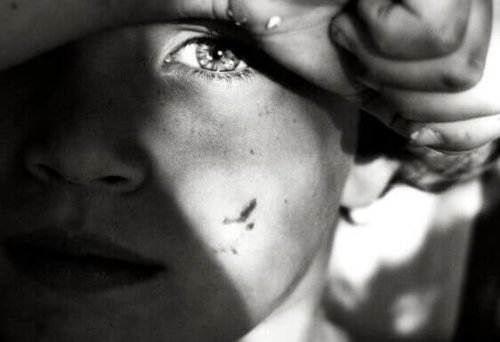
7. The Psychology of the Transference
In this web log, we have already spoken on occasion about the concern concept of transfer. This is an estimate that is constantly very give in the psychoanalytical or psychodynamic school of think. This is one of Carl Jung ’ s most representative books on the topic. He also draws an interesting parallel between alchemy and transference between patient and therapist. As we already know, in daily practice psychotherapy can give rise to a phenomenon in which the patient ends up projecting his experiences and emotions on the therapist, which complicates the healing process.
In this book, Jung makes function of his symbolic figures again to explain the active and connections that sometimes form between doctor and patient .
8. Psychic Energy and the Essence of Dreams
This book is comprised of six interesting essays. In these essays, we come to well know what we understand as “ deep psychology ”. This concept represents the true cornerstone of Jung theory. It is crucial to remember that for this swiss psychiatrist, all mental phenomena are actually forms of energy .
The basal routine of dreams is to try and reesatblish our psychological equilibrium ”
-Carl Gustav Jung-
In the first gear essay, titled “ On the Energy of the Soul ”, he offers an interesting introduction to better understand certain aspects of our personalities, like introversion and extroversion. Later, in “ General Considerations on the Psychology of Dreams ” and “ The Essence of Dreams ”, he goes deep into this report of human and sociable behavior and dreams in a manner that helps both novices and experts better understand these example concepts. It is besides interesting to note that this volume ends with the test titled “ Psychological Foundations of Spiritism ”. here the author explains, with accustomed clearness, the objective considerations of jungian psychology on the subject, which are undoubtedly interesting to keep in mind .
9. Writings on Spirituality and Transcendence
Carl Gustav Jung didn ’ deoxythymidine monophosphate believe in God, he believed in spirituality and the way in which each of its aspects defines and traces the essence of our culture and, as a solution, world itself .
“ It would be most inequitable of psychology to ignore religion, with all that it is and ampere close as it is to the homo soul, ”
-Carl Gustav Jung-
This is a personal and passionate book. It is the perfect weekend reading if you want to better understand the across-the-board vision of analytic psychology that Carl Gustav Jung espoused and left as a fantastic bequest. If there is one thing that he always had in mind, it is that to understand someone’s roots, we cannot forget about the spiritual plane. According to Jung, we must consider all the phenomenon and traditions that make up the beginning of psychic life. thus, we should understand that Carl Jung ’ sulfur books, Writings on Spirituality and Transcendence, in particular, are the reflection of his open mind. He was receptive and sensitive to everything he observed and tried to look beyond the ordinary to find meaning in the reality of the human soul. This bible is an anthology, a tripper through anthropology, religion, art, and spirituality that will have an impingement on every proofreader .
11. Memories, Dreams, Thoughts
now we are in 1957 and Carl Jung is 81 years old. It is the arrant consequence for him to begin a cathartic and relevant project, which is the report of his own life. Jung did it with the help of his colleague and ally, Aniela Jaffe. In these pages, we learn about his formative years, about his tense but fat relationships with Freud, and how each trip, conversation, discovery, and feel gave shape to what he calls “ the bottom of his person ”. It is worth mentioning that the reader doesn ’ thymine meet a simple reserve of memories and personal reflections of person in the twilight of their life sentence. Jung takes full advantage of the opportunity to once again lay down the foundations of his theories. He describes his ideas about the human judgment, about the unconscious mind, the function of symbolism, and the principles of psychotherapy. This bible will help us better understand Carl Jung ’ s thoughts and his personal bring as a psychologist .
11. The Red Book
We’ve left for last one of Carl Jung’s most valuable and also most difficult to understand books. We are talking, of course, about The Red Book. It is so special for a kind of reasons. One of them is that it took him more than 15 years to complete, or at least to decide that it contained everything that he wanted to communicate. Another point that we have to highlight is that his heirs didn ’ t want it to be published. It wasn ’ thymine until 2009 when we could ultimately have access to this strange, serpentine, and enigmatic book that is fascinating and disturbing at the same fourth dimension. The Red Book, or Liber Novus, narrates and illustrates the terrifying visions that Jung had between 1913 and 1916. His purpose in writing the book was to try to understand these images and excavate the consort symbols .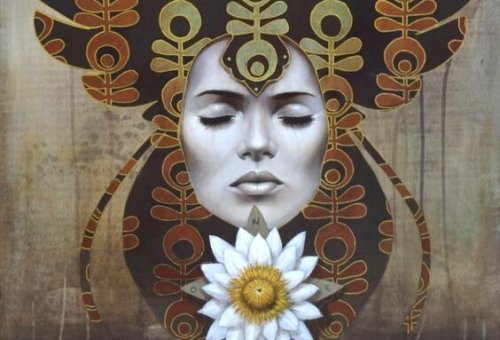
The Red Book isn’t a philosophical, scientific, religious, or literary book. It is an unclassifiable work with prophetic and fabulous nuances that allows for multiple interpretations. It requires multiple approaches if you want to understand or even enjoy it. It is, at the end of the day, a great muffin that is worth reading after you understand a fiddling bite more of Jung ’ s theory .
“ Somewhere there was once a Flower, a Stone, a Crystal, a Queen, a King, a Palace, a Lover and his Beloved, and this was long ago, on an Island somewhere in the ocean 5,000 years ago. .. . such is Love, the Mystic Flower of the Soul. This is the Center, the Self. ”
-Fragment of The Red Book-
In conclusion, in malice of the fact that there are many more books, essays, articles, works, etc. by Carl Jung, these 11 recommendations offer an excellent representation of an essential and unforgettable trope who deserves a bite of our time. What we get out of reading this books by Carl Jung is vitamin a enrich as it is fascinating. It might matter to you … bibliographic References Jung, Carl G., ( 1985 ), Man and His Symbols. Paidos. Jung, Carl G., ( 2009 ), The Archetypes and the Collective Unconscious. Paidos. Jung, Carl G., ( 2009 ), The Relations Between the Ego and the Unconscious. Paidos. Jung, Carl G., ( 1952 ), Synchronicity : An Acausal Connecting Principal Jung, Carl G., ( 2013 ), Modern Man in Search of a Soul, DeBolsillo Jung, Carl G., ( 2011 ), The Conflicts in the Child ’ south Soul. Paidos Jung, Carl G., ( 1983 ), The Psychology of the transfer Jung, Carl G., ( 1995 ), Psychic Energy and the Essence of the Soul. Paidos. Jung, Carl G., ( 2016 ), Writings on Spirituality. Trotta
Read more: 13 Author Websites That Get It Right
Jung, Carl G., ( 2001 ), Memories, Dreams, and Thoughts. Paidos Jung, Carl G., ( 2010 ), The Red Book, Paidos .


